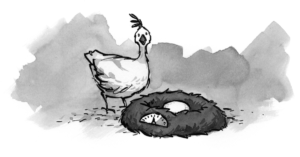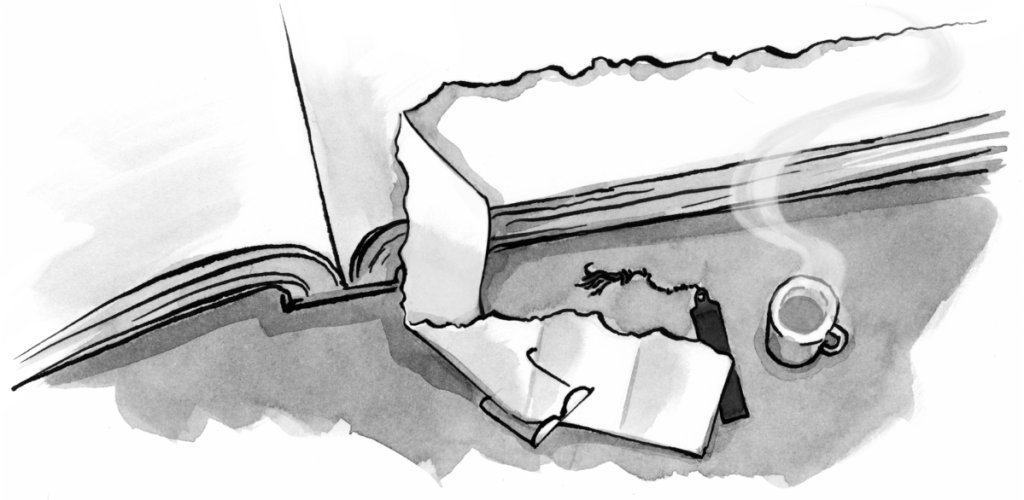We get a sour taste of it when our phones run out of battery power, or when we can’t find a plug at the café. Without energy, it’s like we’ve swallowed the red pill and the magic is gone: our knowledge, our friends, our memories, even our capabilities and identities evaporate without even a puff of smoke for effect.
Article Continues Below
Yet we continue to increase the number of devices in our world, planning for a connected web of things in hopes that the poor will be liberated, education will be free, and our fridges will tell us we’re out of lettuce. Remarkably, we fail to acknowledge that we scarcely have enough fossil fuels to maintain the current state for long. It’s a humbling thought, but as web professionals, nothing we create actually exists when the power goes out.
Now I’m not saying we set off the fire alarm and give up on our egalitarian dreams for pervasive computing, but we’re currently building these dreams on a very fragile foundation. What we need is a way to be part of a solution. As web designers, we probably can’t go build solar panels, but we can talk about sustainability more—and we can exercise the surprising power that lies in seemingly small designerly decisions.
Learning from scarcity#section2
Human-computer interaction researcher Susan Wyche designs for mobile users in rural Africa who have to travel miles to the next village to pay a guy at a kiosk to charge their feature phones for them—every time they run out. Phones among these users are typically seven or eight years old (compared to the first-world average of 18 months1). Our phones get discarded young.
These user stories remind us how invisible obsolescence has become, but even this can be tamed by conscious decision-making on the part of designers. For example, designing for accessibility, with its support for backward compatibility, allows older devices to be useful for longer.
Power outages are also part of daily life in the large middle-class cities of India, like Bangalore, where UX designers are turning to their users for tips on thriving with less. A team at IBM Research, led by Yedendra Shrinivasan, carried out a study that revealed a culture of routine conservation there, and its results provide some practical implications for designers.
For example, according to the team’s findings, we should design systems to provide point-of-use feedback and suggest energy efficiency measures. Energy use monitoring wasn’t as useful to their participants as was device-specific feedback coupled with opportunities and suggestions for saving more. These users already knew how much energy they used, and just wanted to know how to use less.
These same approaches could be applied in developed countries where, although we aren’t spurred on by actual outages (yet), we do want to reduce consumption. Helpful nudges provided by our devices might be just the thing.
For example, what if your laptop tracked its own use, found out you leave it on overnight, and suggested a power down at bedtime? What if the maps on your smartphone could give you directions that showed alternate transportation options with associated resource use?—e.g., take the route to work via your Toyota (8 pounds CO2/0.3 gallons gasoline), the subway (2 pounds CO2/2kWh), or a bicycle (burn 300 calories).
The IBM research also suggests we should design opportunistic systems that make use of the energy that is available when it’s available—systems that don’t need to be on full-time, that can run tasks only when connected, and that can turn themselves off when not in use.2
Meet Brad the toaster#section3
Sustainability is serious stuff, but it can also be a good time. Simone Rebaudengo, inventor of Brad, a toaster with opinions about its owners, suggests that products should have the right to walk out on us.
His off-the-wall suggestion is that we solve our materialistic addiction to stuff by changing the way we design that stuff. “What if people didn’t own products, but hosted them?” he challenges. What if products were desperate to be used, and if unused, they could leave you for someone better—someone who needed them more?
To demonstrate, Rebaudengo created a prototype project, which he described as a “real fictional service” that was road-tested via a network of toasters programmed to love being used, complete with a geo-mapped website. The toasters communicated with each other online and even with their owners via Twitter. They could respond to their frequency of use and move their handles up and down for attention. No, really. Brad’s story, complete with interviews and footage of toasters in the neighborhood, is told in a brief and highly entertaining video.
Rebaudengo’s words were echoed by MOMA curator Paola Antonelli (who has acquired interactive media like Donkey Kong and Portal into MOMA’s collection) at CHI 2013, where she noted that people are thinking less about possessing things and more about using them. For evidence, look at sites like Streetbank, where friends and neighbors can share things like leaf blowers and camping equipment that would otherwise go years without use. Guerrilla and community gardeners use public land to grow and share fresh produce—see the American Community Gardening Association or Ron Finley, who started growing food along neglected roadsides in South Los Angeles.
As designers, how can we support this growing mentality? Thankfully, there are plenty of less-eccentric ways than talking toasters to be part of the solution.
As web professionals, we can make resource-conservative and resource-creative decisions at all our touchpoints with materials, whether we’re planning a conference, designing collateral, shaping user behavior, or buying a coffee. Re-nourish is an excellent launchpad. It’s a resource—including a project calculator and “green your studio” tool—dedicated to sustainable systems thinking for the communications design community. But even if we work exclusively in the virtual, there are ways we can take action.
Plan lower-energy events#section5
We tend to run heaps of events, from grand conferences to pub meetups, and there’s no reason not to make these more sustainable. When planning a Sydney conference last year, my team turned to the Sustainable Events Alliance for advice and supplier listings, for example. We ended up combining lanyard and conference materials into one USB name tag—a simple but utterly feasible change that reduced waste. There are hundreds more decisions like this one, from reusable coffee cups to freebies to bike parking that, en masse, can make a big impact.
Design for backward compatibility#section6
If you didn’t have enough reasons to design for accessibility compliance, the eight-year-old phones in rural Africa point to yet another. Accessibility guidelines are one part of the effort toward taming the unsustainable rate of technology turnover.
Of course, it’s not all in our power—as long as that turnover is lucrative for manufacturers, their product strategy will probably encourage it. But we can do our part by designing for the graceful degradation and progressive enhancement that allows older devices to be used for longer, for mobile phones to reach the age of three, and for users in countries that already stretch device longevity to its limits to remain included.
Support sustainable technology#section7
We can also make demands with our buying power (gadget lovers, take note). By choosing to be early adopters of sustainable technology, you are voting for certain priorities and supporting socially innovative industry.
There are already examples of bike-powered phone chargers, backpacks, and solar chargers, which, while not always sufficiently robust for the developing world, work wonders in downtown San Francisco or London.
Help your users use less#section8
But of course, our greatest impact may lie in how we help our users make more sustainable decisions more easily. In the same way many washing machines and apartments now come with energy ratings, little bits of just-in-time data can go a long way in helping users choose greener options. Tags, search filters, and feature lists could include sustainability criteria. This of course entails thinking about sustainability early in a project, so we can plan for the database fields, categories, and metadata that would allow for this. Processing big data to visualize information, or provide more sustainable options, can be the nudge that shifts a population.
Designers are already using their capacity to generate creative solutions to solve hard social problems. Initiatives like UX for good and Open IDEO provide infrastructure for design professionals to solve big problems collectively. Think what magic we could make if we were problem-solving for sustainability as an industry.
Isn’t it time we added sustainable design to every list of project requirements? Yes, profit maximization, management, and the status quo will show up to give us a hard time. But then again, we don’t work on the web because it’s easy. We’re here because we like solving tough problems—all the more so when they’re really important ones.
The more we embrace this elephant in the room, the sooner we’ll become part of the solution. And a solution is what we’ll need if we want to see our industry not only survive, but create positive impact worldwide for eons to come.




